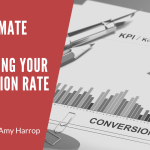 Selling print on demand products is one of the best ways I know to build a business. The up-front costs are low and it’s possible to create a wide array of products without investing anything other than your time.
Selling print on demand products is one of the best ways I know to build a business. The up-front costs are low and it’s possible to create a wide array of products without investing anything other than your time.
There’s one potential problem. To make your POD business a profitable one, you’ll need to set product prices that reflect your investment of time and energy and allow you to pay your operating expenses while also turning a profit.
It’s a tricky proposition even for experienced entrepreneurs. In this guide to pricing print on demand products, I’ll break down the various components of price and help you set prices that are reasonable and lucrative.
Market Research
The first step of pricing is conducting comprehensive market research. Whether you’re selling products on Etsy, Redbubble, or your own website, you need a clear picture of the prices for products like yours.
You’ll want to do as close a comparison as possible. If you’re selling art prints, look for prints of the same size and quality as yours. It won’t help to compare the price of an 8’ by 10’ print if you’re selling a 24’ by 36’ print.
You should expect to see a range of prices and I recommend making note of prices at the high and low end of the range. There are a lot of other variables to consider, so don’t mentally lock into a price until you’ve looked at every aspect of cost.
Design Costs
Are you designing products yourself or paying a designer to do the work for you? If it’s the latter, then it should be easy to incorporate the cost into your pricing. You know what you paid and that’s the amount you’ll need to recoup.
It’s common for people who do their own design work to undervalue their work or to leave it out of the equation in the interest of keeping prices low. Don’t do that. Your time is valuable, and you should pay yourself a fair amount for the work you do.
You should factor in the cost of any tools you use to create your designs. For example, perhaps you pay a monthly subscription fee for the premium version of Canva. That’s an element of your design cost and should be accounted for in your price.
ePlatform Fees
ePlatforms such as Etsy charge fees for the products you list and sell. You will need to build these expenses into your prices.
For example, Etsy charges a $0.20 listing fee per product and 5% of the purchase price on each sale. To earn a profit on any product you sell, you will need to charge enough to allow you to pay these fees and recoup your other expenses.
Production Costs
In the world of print on demand, there are two parts to every transaction: the sale itself and the printing of the product. In many cases, people who sell POD products integrate their online shops with fulfillment services, so their customers can easily order the products they want.
Printing prices can vary greatly depending on the product being printed. A large fine art print will cost far more than a mug. If you choose to integrate your shop with a printing service, you’ll need to use their price list and add the printing costs into your price.
Shipping Costs
In addition to being printed, products must be shipped. While you can certainly include the shipping price as an add-on when people check out of your shop, there are some good reasons to build the cost into your product price.
81% of shoppers say that free shipping is the number one concern when shopping online and a whopping 93% say they will take action – such as adding items to their cart – to qualify for free shipping. With POD products, you’ll likely have access to a list of shipping prices from your printing partner and you can use those to set your prices. Keep in mind that 83% of buyers are willing to wait an extra two or three days for their products to arrive in exchange for free shipping. That means you can choose a ground shipping option to keep your prices reasonable.
Taxes
Most states and countries charge a sales tax and in some cases, it’s your responsibility to collect and pay it. Because of variations in sales tax rates, it’s almost always going to make more sense to add the taxes at the end of a transaction once you know where the customer lives.
Etsy has a detailed guide to determining your sales tax responsibilities. You can find it here.
Hourly Rate
So far, we have focused on the obvious expenses associated with creating and selling POD products, but there’s one more item to review. Your time is valuable. Even if you’re outsourcing your designs and you plan on building the design fee into your prices, you should still account for the time you put into:
- Conceptualizing products and brainstorming ideas
- Photographing products or creating product images for your listings
- Writing product descriptions and optimizing your listings and your shop
- Evaluating and hiring designer and writers
- Setting up printing integrations
- Providing service to your customers
Your time matters. If you don’t charge enough to compensate yourself, your shop won’t be profitable. You must earn something for the time and creative energy you put into your print on demand business.
Putting It Together
Reading everything in our guide so far, the topic of pricing might seem overwhelming. You can simplify the process by following these steps.
- List the money you have spent on the product, including design fees, tools, production, shipping, and platform fees.
- Estimate the amount of time you have spent creating the product and listing it.
- Estimate your sales.
One way to simplify the third step is to create limited edition products. That way, you can take your costs and divide the total by the number of products you plan to sell. Of course, you may not sell all of them, but it’s a method that can help you price your products accurately.
If you’re creating products with no intention of limiting the sales, then you’ll need to make your best guess. With an established POD business, you can use past sales to predict future ones. Be patient with yourself. It will get easier with time.
This guide to POD pricing will help you set product prices that are both competitive and profitable. If you need help creating POD products, click here to check out POD Profits Playbook!



